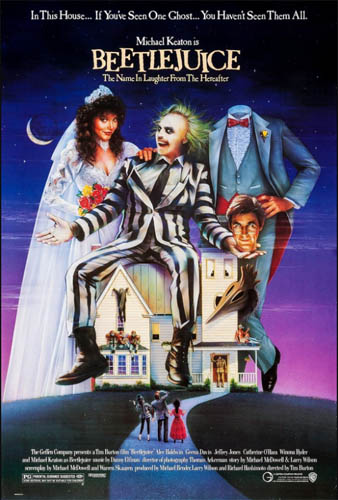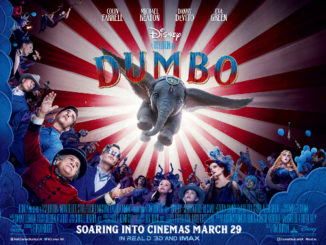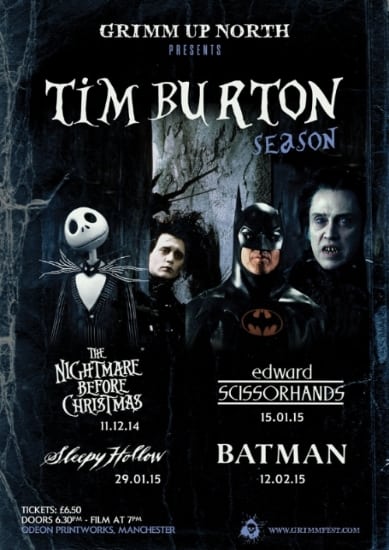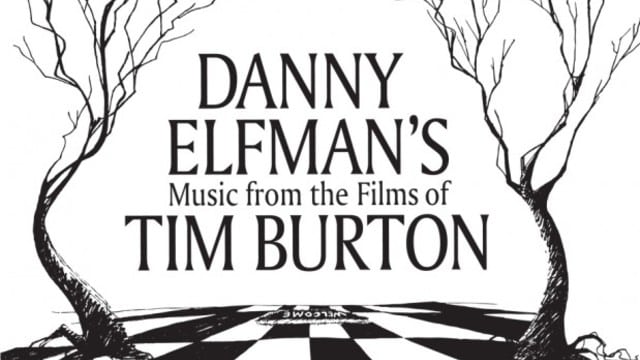Beetlejuice (1988)
Directed by: Tim Burton
Written by: Michael McDowell
Starring: Alec Baldwin, Catherine O'Hara, Michael Keaton, Winona Ryder

REVIEWED BY: Alasdair Yule, Official HCF Critic
1988, in the tiny town of Winter River, Connecticut, a married couple, Barbara (Geena Davis), and Adam (Alec Baldwin) move into their new, idyllic country home. They go for a trip into town for some shopping and let’s just say they don’t quite make it back the same. Something is wrong; they have no reflections, there are gaps in their memories, “how’d we get back” and Geena Davis hand lights on fire. Things only get weirder when they leave the house and stumble into a desert with strange creatures zooming through the sand, and where their voices echo despite there being no mountains anywhere to bounce the sound back! The Maitlands are trapped in their home, alone and dead.
That is, until the Deetz’s move in and upset everything. Charles wants the quiet life, Delia is an artist, very much in Tim Burton’s own vein, and makes so many changes to the house one has to wonder why she ever agreed to move in. There’s a through line of cheeky humour that implies that Catherine O’Hara’s character is the one that wears the trousers in the marriage.
This of course upsets the residence ghosts, Adam and Barbara Maitland who try to scare them away. But with no luck.
There’s a great laugh out loud joke where the Maitlands are making ghostly “wooooo” noises and Lydia thinks her parents in the next room are being weird.
They soon discover that the Deetz’s daughter, played by Winona Ryder, can see them and through her they are able to communicate. She is not scared.
Oh, “Tonight she sleeps with Prince Valium!” Great one-liner.
Time to call in the big guns.
Beetlejuice! He attended Julliard, is a graduate of the Harvard Business School, travelled quite extensively, lived through the Black Plague (and had a pretty good time during that), and has seen “The Exorcist” about 167 times (and it keeps getting funnier every single time he’s seen it). He is raucous, boorish, rude and absolutely hilarious. He talks a mile-a-minute and a contract with him is not worth the paper it’s written on. He’s a bio-exorcist for hire and will happily (perhaps too happily) rid your home of the living. There’s a threat to him too; in snake form (Beetlejuice can transform – the dead have powers and there appears to be no defined limits on what these powers are) he drops a man over a bannister and could have seriously injured him, and then there’s his lecherous grin and snake eyes when he closes in on Lydia Deetz. Barabara rightfully calls him away. But the damage is already done. Did you know, Michael Keaton’s Beetlejuice is only onscreen for seventeen minutes out of the entire movie which has a runtime of 92 minutes. That’s a whopping 75 Beetlejuice-free minutes! But Mr Keaton makes a meal out of every second of screen time he has. There’s an effect here where, like in 1995s The Mask starring Jim Carrey, the mask is the films centrepiece, but is definitely not the majority of the runtime. Whilst we wait a long time to get to our Beetlejiuce, something’s are worth waiting for, but to tide the audience over in the meantime, we need to have an engaging story going on, and we do! We see what Burton’s death is like from the unnerving perspective of people who are recently deceased. It’s isolating, confusing and frustrating. Beetlejuice offers an out, an escape. But it’s a Faustian pact. For as many problems as Beetlejuice solves, he creates many more. Someone once described Lord Byron as “mad, bad and dangerous to know”. I can’t help but feel this also applies to Beetlejuice.
The world building is on point. We establish the ghosts can’t leave the house, and when dust starts accumulating (how is dust, dead skin cell particulate accumulating when the characters are dead, so there should be no dust – shhh, stop overthinking, just have fun), Barbara bemoans that the Hoover is in the garage and they can’t leave the house lest they be sandwormed. However, the concept that people who commit suicide become civil servants in the afterlife is an idea that could only have been birthed in an 80s movie. And one I am glad was not referenced in the sequel (we will be getting to that).
Thematically, there’s a very odd combination going on here. Tim burton has combined the horror of death with mundane bureaucracy. Indeed, an odd pairing, but one that gives Beetlejuice its own, unique identity. Civil servants for the dead! Barbara and Adam have been assigned a caseworker! We the audience see what they are going through, and can all too easily relate to their troubles and frustrations. Who hasn’t been inconvenienced by bureaucracy at least once in their lives?
There are a good few laughs. The football team addressing Sylvia Sidney as “Coach” only to get the response, “I’m not your coach, he survived!”
The makeup department clearly had fun with the queue in “Death’s waiting room”. But the main appeal of Beetlejuice is it’s unique quirkiness and almost playful interpretation of death. There’s fun to be had in this visually absurd film.
There’s a lot to like in this film which, broken down to its basics, the living and the dead share a house together and learn to live with each other. There’s a sense that, by the end of the movie, a journey has been travelled, a story told. A regrettably rare thing nowadays.
The special effects may be antiquated, this film was released several years prior to Jurassic Park and Terminator 2, but there’s something to be said for stop-motion. The Burton-esque zebra-style sandworms look great and Barbara and Adam changing their heads is a grizzly effect, but one I loved seeing as a child. When Barbara moves a small model horse in front of a mirror, the reflection doesn’t exactly match her motions, but that’s ok. I like these little idiosyncrasies. CGI gives movies too much polish and refinement; they can scrub away a films soul. And it there’s one thing Beeltejuice has plenty of, that’s soul.
Rating: 













Be the first to comment